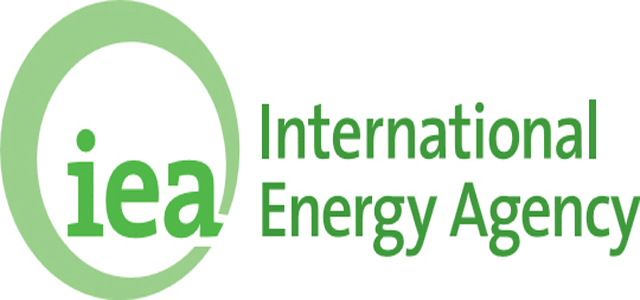Part 2 of 2 Parts (Please read Part 1 first)
At this time there is only one nuclear power plant being constructed in the U.S. in the state of Georgia. It is now estimated that it will cost twenty-five billion dollars to complete and it had to be supported by twelve billion dollars in federal loan guarantees. The Georgia Public Service Commission stated that even a delay of a few months could raise the cost so much that the project might have to be abandoned.
The problem with the rising cost of nuclear power is not confined to the U.S. In Britain, the Hinkley Point C power plant is the first new nuclear power plant to be constructed there in more than twenty years. The original cost projects of sixteen billion dollars has risen by more than fifty percent to twenty-six billion dollars.
France has been getting more than seventy-five percent of its electricity from nuclear power for years. Even with all their experience in nuclear power, they are unable to construct a next generation nuclear power plant at a reasonable cost and on schedule.
EDF is the French owned nuclear utility. They have just announced that there will be another schedule delay and additional costs in the construction of their first European Pressurized Reactor. The original estimated cost was about four billion dollars. The latest estimate is twelve and three quarter billion dollars. This is more than three times the original estimate.
There were discussions in South Africa about the need for nuclear power. Secret conversations with Russia about building a nuclear power plant were revealed and caused a scandal. The critics of nuclear power in S.A. say that it is not needed and is far too expensive. Other African countries are been courted by the Russian nuclear company, Rosatom but, once again, there are critics who point out that the costs are too high, the demand is too low and infrastructure is lacking to make it practical to turn to nuclear power.
Vietnam and Russia were discussing the construction of a nuclear power plant in Vietnam by Rosatom. It would utilize something that the Russians call the Build-Own-Operate model. The basic concept here would be to have Rosatom construct, staff, and fuel the new plant. Russia would own it and would deal with removal of spent fuel. There would also be a massive loan from Russian banks for construction with the money going to Rosatom, of course. The Vietnamese decided against the project and it was cancelled.
All over the world, the use of nuclear power in developed nations has been declining except for Russia and China who are actively building reactors for internal power generation and export to other nations. The focus of their sales efforts have largely been on the developing world. Massive amounts of money, international status and possible nuclear weapon development are supporting the international nuclear power market. Problems with governmental corruption, incompetence, and possibilities for the proliferation of nuclear weapons are strong reasons for the developing world to reject nuclear power.
In the end, it will be economics that will destroy nuclear power. Hopefully, the reality that nuclear power is too expensive and dangerous will sink in and the world’s infatuation with nuclear power will end.
Blog
-

Nuclear Reactors 598 – Nuclear Power Is Too Expensive – Part 2 of 2 Parts
-

Geiger Readings for Jul 31, 2018
Ambient office = 116 nanosieverts per hour
Ambient outside = 79 nanosieverts per hour
Soil exposed to rain water = 78 nanosieverts per hour
Orange bell pepper from Central Market = 171 nanosieverts per hour
Tap water = 102 nanosieverts per hour
Filter water = 94 nanosieverts per hour
-

Nuclear Reactors 597 – Nuclear Power Is Too Expensive – Part 1 of 2 Parts
Part 1 of 2 Parts
I like to say that nuclear power is the most complex and dangerous way to boil water ever invented by the human race. I also like to say that, in the end, it will be economics and public opinion that brings an end to the global use of nuclear power to provide a great deal of the electricity consumed by the nations of the world. Now a long time nuclear industry advocate appears to agree with me, at least with respect to economic issues.
Nobuo Tanaca is the former head of the International Energy Agency (IAEA). The IEA is “Paris-based autonomous intergovernmental organization established in the framework of the Organization for Economic Co-operation and Development (OECD) in 1974 in the wake of the 1973 oil crisis.” While originally aimed at responding to physical disruptions of the global oil supply, the mandate for the IEA has expanded to include energy security, economic development and environmental protection.
Tanaka says that new nuclear power plants are ridiculously expensive and uncompetitive compared to solar power. Bloomberg says that the U.S. nuclear power plants are “bleeding cash” and the Brattle Group published an analysis on July 19th which said that it would cost at least five billion dollars a year to save existing nuclear power plants.
Proposals have been brought forward in the U.S. Congress to put a price on carbon pollution which would make nuclear power more competitive. Conservatives in Congress have opposed every such proposal. A 2009 proposal for carbon cap-and-trade climate change mitigation passed in the House but was defeated by conservatives in the Senate. A rising price on carbon dioxide emissions would certainly improve the competitiveness of carbon-free nuclear power against natural gas, one of its major competitors. Studies show that a twenty dollar a ton carbon tax could preserve the nuclear industry in the U.S.
Proponents of nuclear power as a major solution to mitigating climate change have criticized environmentalists as blocking progress in saving nuclear power. However, as I have often said, economics will kill nuclear power, not environmentalism.
An analysis released last November from Lazard Ltd. pointed out that in many regions, building and operating new renewable energy installations is cheaper that just operating a nuclear power plant. A May New Energy Finance report from Bloomberg concluded that twenty four out of sixty six U.S. nuclear power plants are either scheduled to be shut down or will probably fail to turn profit by 2021.
It should be obvious that if existing nuclear power plants are so uncompetitive, building and financing an entire fleet of new nuclear power plants would be too expensive to even consider. Two nuclear power reactors that were being built in South Carolina have been abandoned after nine billion dollars had been spent partly due to rising costs and schedule slippage. It was originally estimated that it would cost eleven and a half billion dollars to build the two reactors. When the project was cancelled, the estimated cost had rising to twenty-five billion dollars, more than twice the original cost.
Please read Part 2 -

Geiger Readings for Jul 30, 2018
Ambient office = 116 nanosieverts per hour
Ambient outside = 79 nanosieverts per hour
Soil exposed to rain water = 78 nanosieverts per hour
Beefsteak tomato from Central Market = 171 nanosieverts per hour
Tap water = 102 nanosieverts per hour
Filter water = 94 nanosieverts per hour
-

Geiger Readings for Jul 29, 2018
Ambient office = 116 nanosieverts per hour
Ambient outside = 79 nanosieverts per hour
Soil exposed to rain water = 78 nanosieverts per hour
Avocado from Central Market = 171 nanosieverts per hour
Tap water = 102 nanosieverts per hour
Filter water = 94 nanosieverts per hour
-

Geiger Readings for Jul 28, 2018
Ambient office = 116 nanosieverts per hour
Ambient outside = 79 nanosieverts per hour
Soil exposed to rain water = 78 nanosieverts per hour
White onion from Central Market = 171 nanosieverts per hour
Tap water = 102 nanosieverts per hour
Filter water = 94 nanosieverts per hour
Dover sole – Caught in USA = 89 nanosieverts per hour
